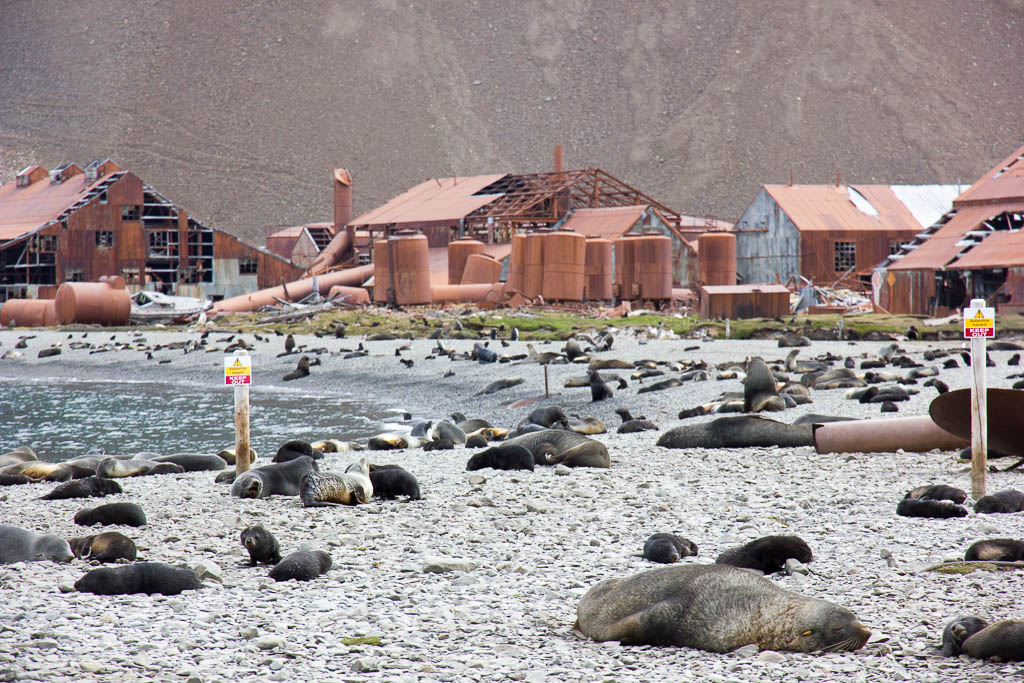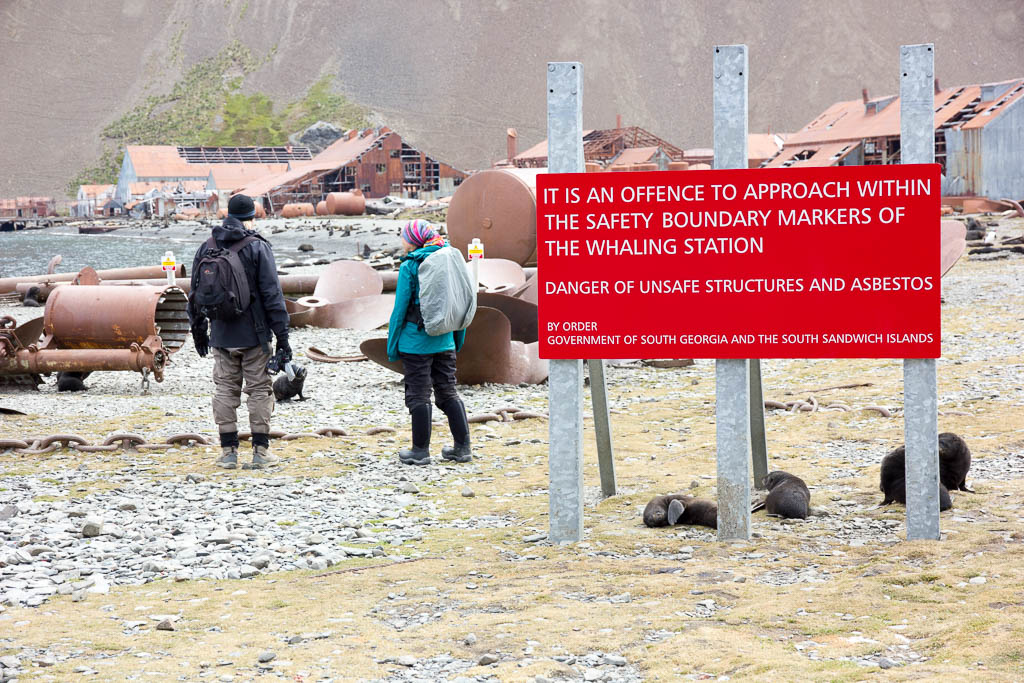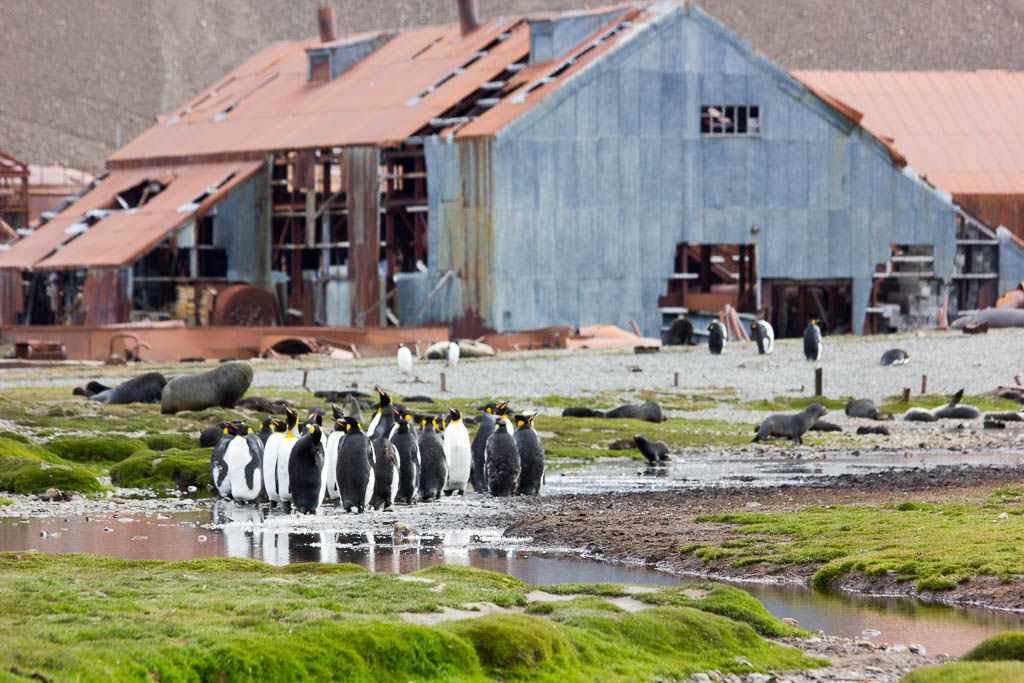Boo. No macaroni penguins. Weather was too bad to permit a landing. Instead, Fortuna Bay, for Gentoos and Kings, then the Shackleton Hike to Stromness in the afternoon. Fortuna Bay was our first King penguin colony, and our first real king viewing, notwithstanding the few random birds we had seen earlier at Sea Lion Island. It was also our first exposure to “oakum boys” – the big fuzzy brown King penguin chicks nicknamed for the ship’s boys who retrieved the bundles of hemp used for caulking leaks from the hold. The chicks were very cute, and looked like kiwifruit with beaks, and had a much more pleasant trilling chirp than their parents’ raucous and guttural caw. The beach was littered with the ubiquitous ellies, lying around in big blubbery piles waiting their mothers’ return from feeding and following us with their big brown liquidy eyes. Gentoos at the opposite end of the beach provided their usual entertainment, striding purposefully amongst the sleepy seals to get to whatever important task they needed to achieve.
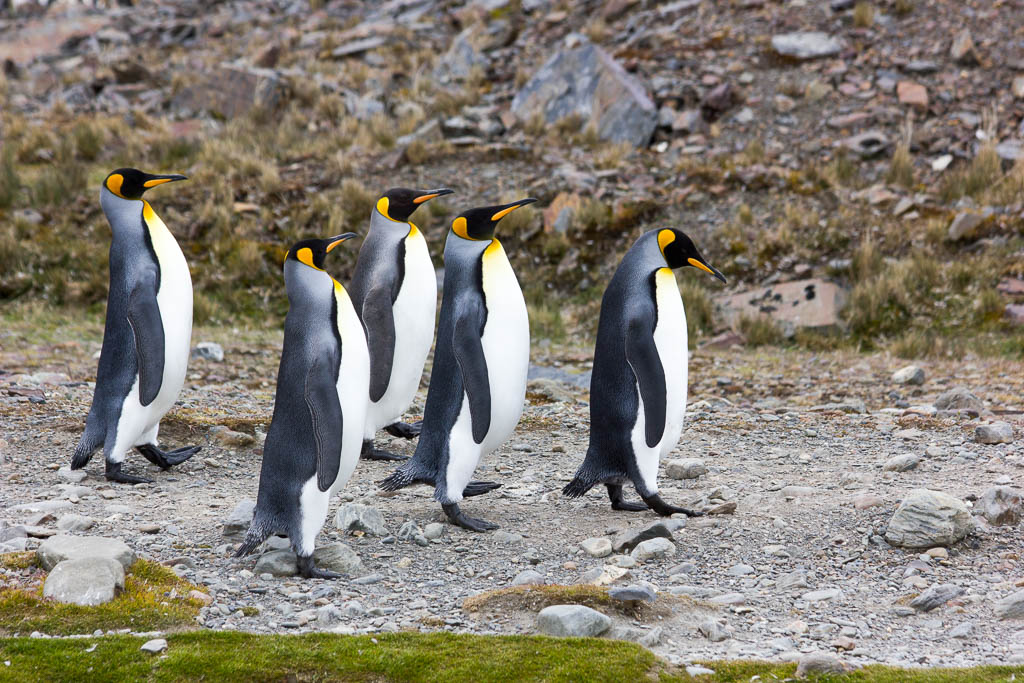
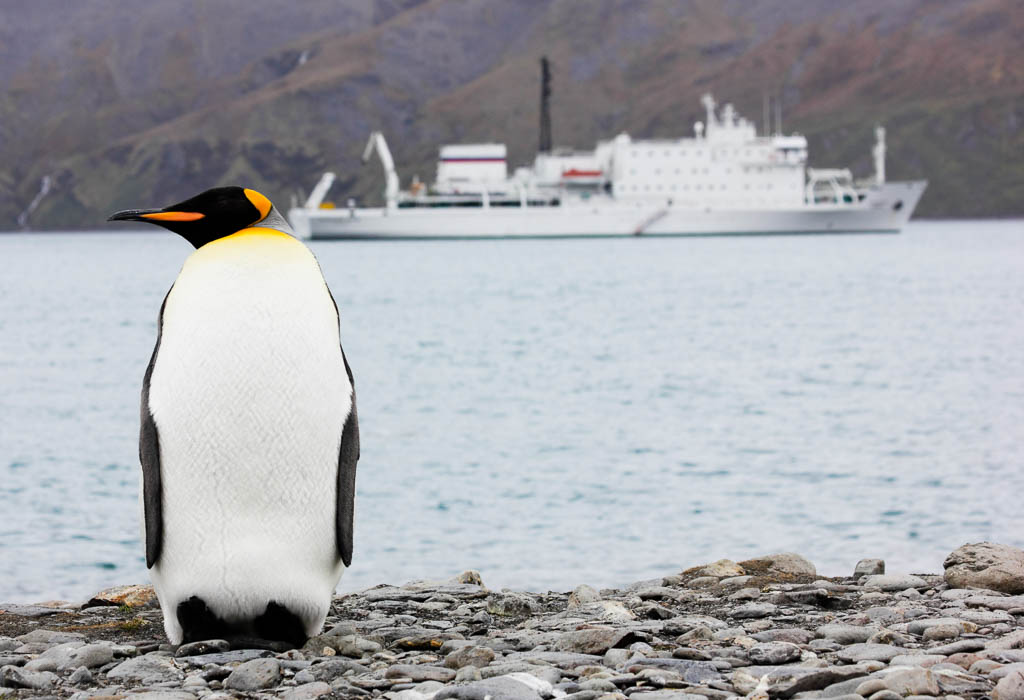
Lunch was grabbed quickly on the beach, and comprised peanut butter and jam sandwiches due to the restrictions on South Georgia Island on the landing and consumption of fresh food, then it was a quick zodiac ride to the opposite side of the bay to commence the Shackleton Walk. Pauline and Tim led us up the steep hill away from the beach, and up to Crean Lake, punctuating the hike with snippets of historical information on Shackleton, his men, and their incredible journey to rescue at Stromness almost 100 years ago. While the hike itself was not overly strenuous, I couldn’t help but be in awe of the tenacity of Shackleton and his men to survive for 18 months, and two Antarctic winters, then sail and hike to rescue in this most wild and isolated places on earth. They also achieved the arduous journey later in the season, and almost 100 years previously, when the weather was colder and the glaciers much more extensive. I am in awe at their achievement, and couldn’t imagine having the courage or stamina to complete such an amazing self-rescue.
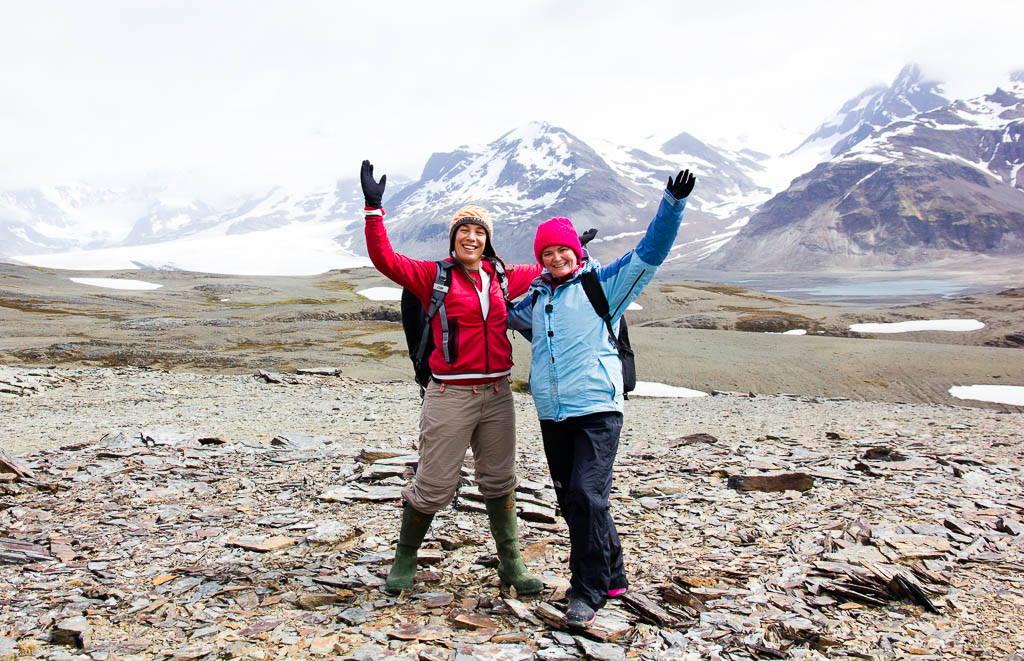
At the top of the hike, on the ridge above Crean Lake Stromness Harbour came into view and the distinctive Z-shaped fold on Busen Hill could be clearly seen. This landmark was one of the features that allowed Shackleton to determine his location and the direction to rescue at Stromness, and aside from the historical significance is an impressive example of structural geology at work. Stromness Harbour was littered with tabular icebergs and bergy bits, off casts of the giant B15 iceberg that calved from the Ross Ice Shelf in 2002. We descended down a steep, snow-covered scree slope, some accelerating through the snow on their backsides, others (like me) choosing a more sedate pace and upright gait. At the base of the scree to the north, and feeding into the glacial outwash plain was Shackleton’s waterfall, down which he and his men ice-climbed on their final descent into the whaling station. The final 2 km to the station was along the glacial outwash plain, avoiding the militant fur seals and the nesting Antarctic Terns.
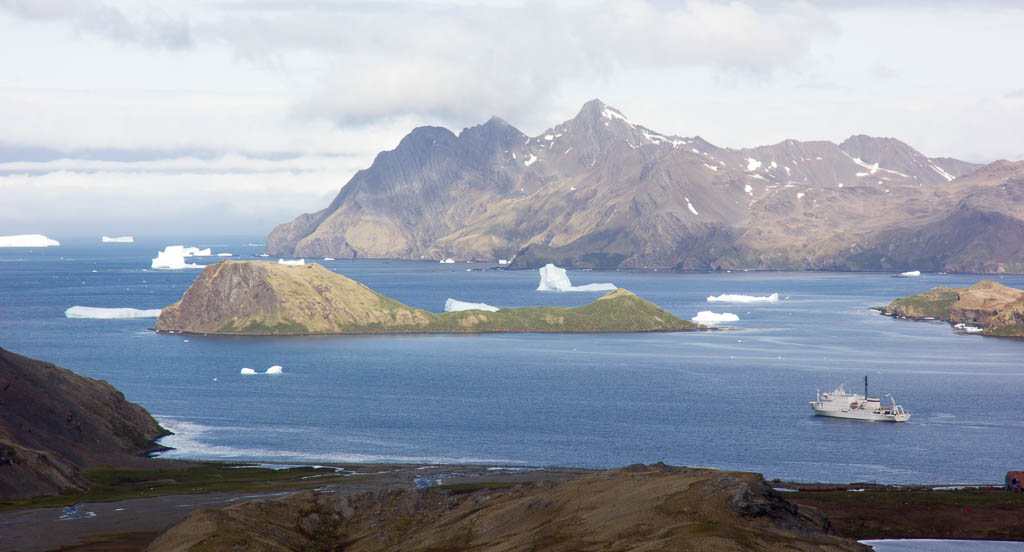
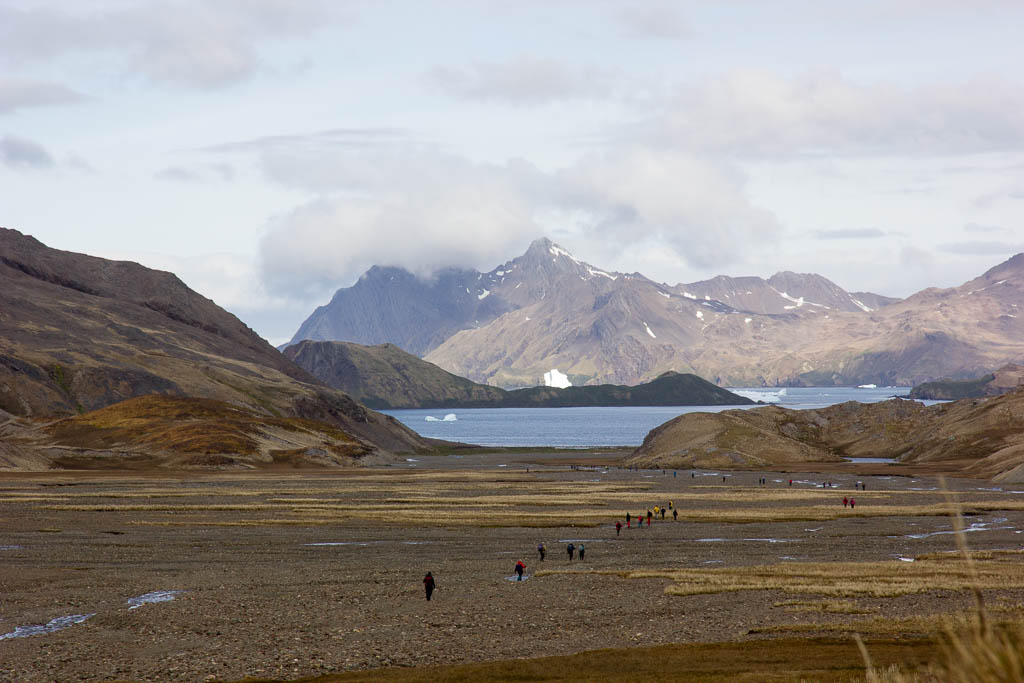
The station is out of bounds now, due to asbestos and the dangers of collapsing buildings and flying corrugated iron, however remnants of the whaling activity could be seen everywhere around, including a couple of fur seal pups playing on a partially buried whale vertebra on the beach. Disturbing evidence indeed of man’s destruction of the environment in even the most remote of locations. More of this tomorrow, with a trip to Grytviken.
